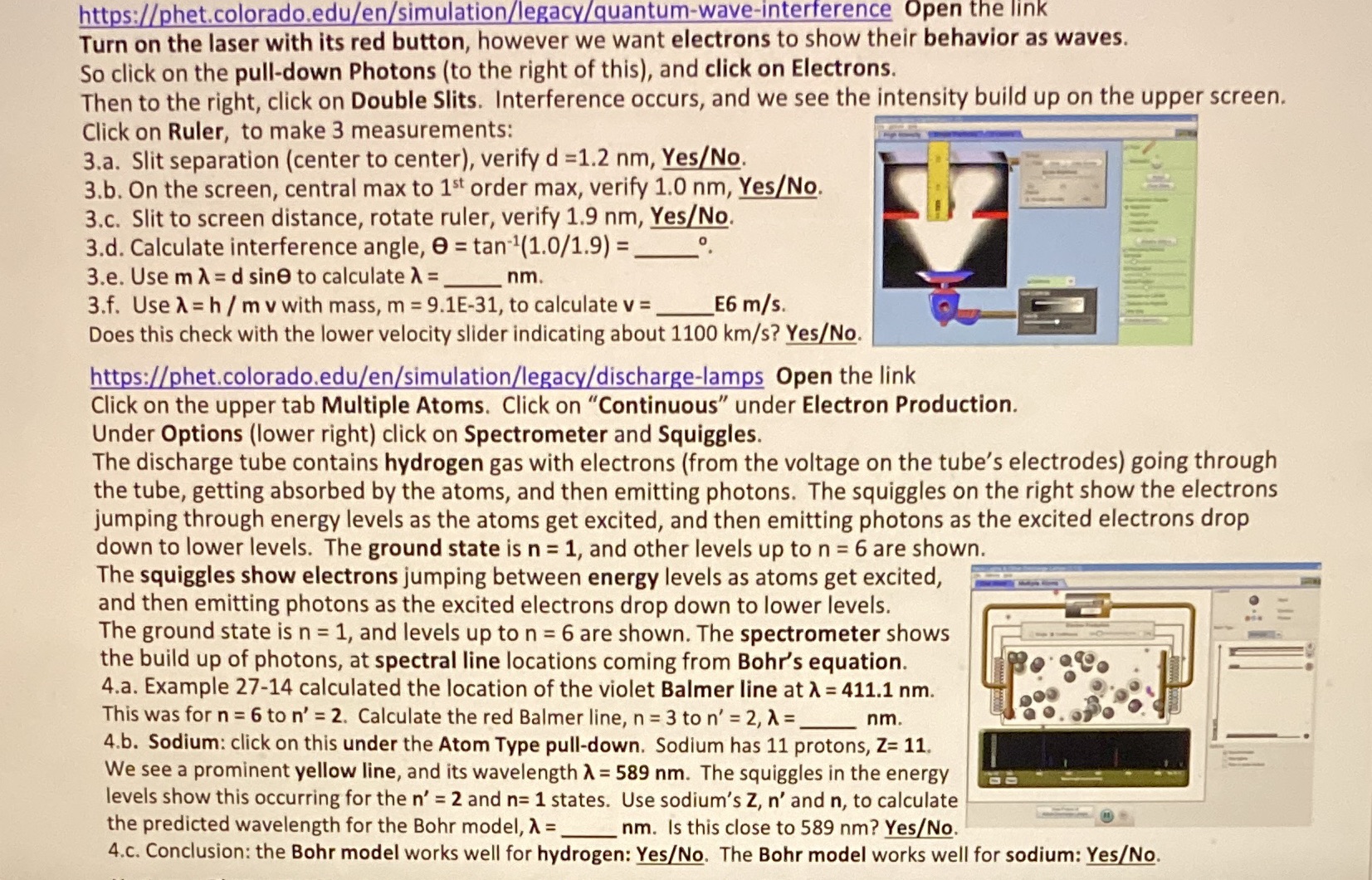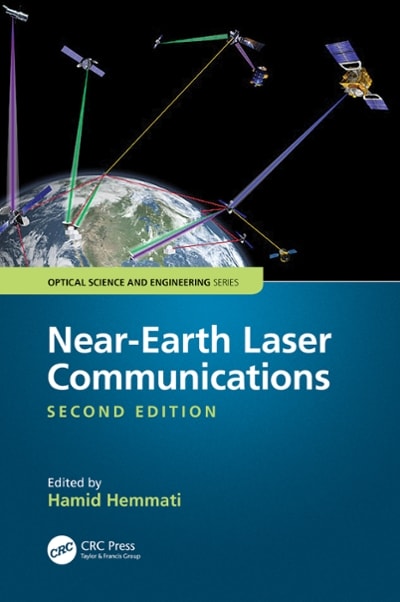Part 1 Reference: https://phet.colorado.edu/en/simulation/legacy/quantum-wave-interferencePart 2 Reference: https://phet.colorado.edu/en/simulation/legacy/discharge-lamps
.mr'wd u ' _ a - -w v re ,Opentneilnx _ _'l'urn on the laser with its recl button, however we want electrons to show their behavior as waves . _ 5o click on the pull-down Photons (to the right of this), and click on Electrons. is 111en to the right, click on Double Sllts. interference occurs, and we see the intensity build up on the Upper screen. T tuck on Ruler, to make 3 measurements: - - . -- 3.3. Slit separation (center to center), verify d =1. 2 nm, YesZN . 31:. On the screen, central max to 1" order max, verify 1.0 nm, YestN . 3. c. Slltto screen distance, rotate ruler, verify 1.9 nm, YoeslN. 3.d. Calculate interference angle, 9 = tan'1(1.0/1.9) = 3.e. Use m A = d sine to calculate A = nm. 3.f. Use A= h I m v wlth mass, m = 9.1E-31, to calculate v = 6 m/s. Does this check with the lower velocity slider Indicating about 1100 km/s? YeslNo. httpszphetcglorado.edu[en[slmulation[legagyzdischargedamps Open the link Click on the upper tab Multiple Atoms. Click on \"Continuous\" under Electron Production. Under Options (lower right) click on Spectrometer and Squiggles. The discharge tube contains hydrogen gas with electrons (from the voltage on the tube's electrodes) going through the tube, getting absorbed by the atoms, and then emitting photons. The squiggles on the right show the electrons Jumping through energy levels as the atoms get excited, and then emitting photons as the excited electrons drop down to lower levels. The ground state is n = 1, and other levels up to n = 6 are shown. \"The squiggles show electronsjumplng between energy levels as atoms get excited, and then emitting photons as the excited electrons drop down to lower levels. The ground state ls n = 1, and levels up to n = 6 are shown. The spectrometer shows the build up of photons, at spectral line locations coming from Bohl's equation. 4.a. Example 27-14 calculated the location of the violet Balmer line at A = 411.1 nm. This was for n = Bto n' = 2. Calculate the red Balmer line, n = 3 to n' = 2, A = nm. 41:. Sodium: click on this under the Atom Type pull-down. Sodium has 11 protons, 22 11. We see a prominent yellow line, and its wavelength A: 589 nm. The squiggles in the energy levels show this occurring for the n'- -2 and n: 1 states. Use sodium 5 Z, n' and n, to calculate edge the predicted wavelength for the Bohr model A- - _.nm Is this close to 589 nm?Y YeslNo \"i ' ' ' ' ' I .55 m 4.1:. Conclusion: the Bohr model works well for hydrogen: Y.es[No The Bohr model works well for sodium\" Y.es(l\\lo







